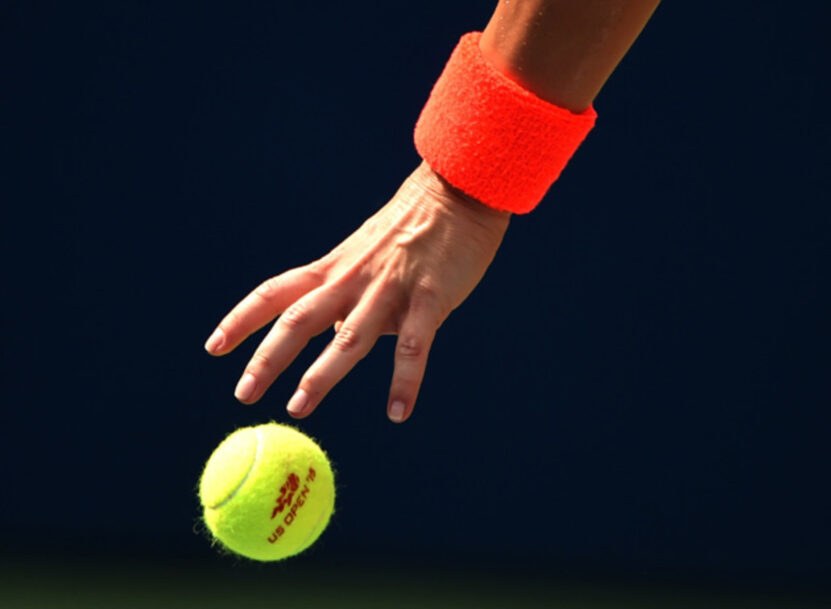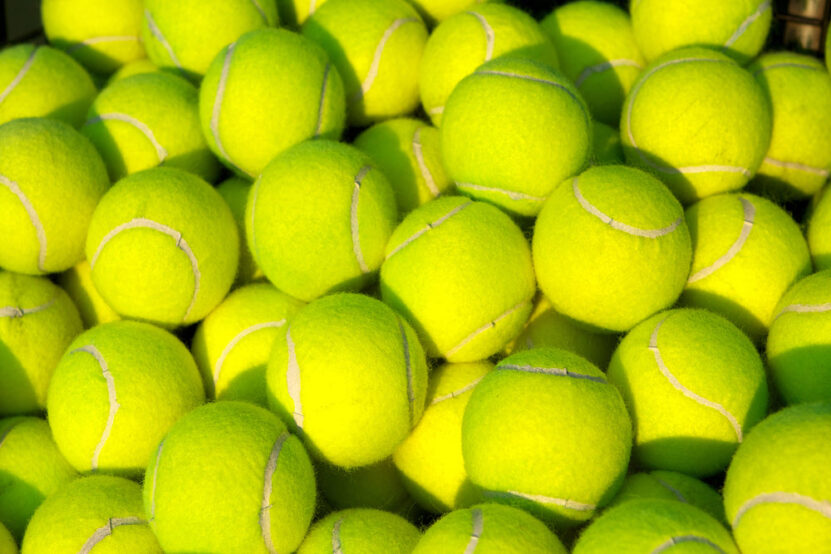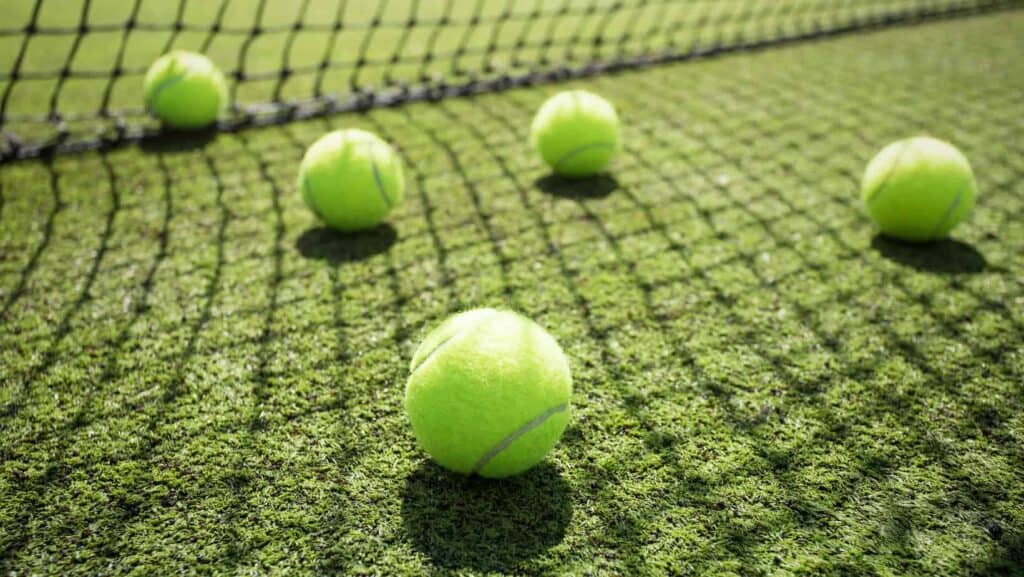Modern tennis balls are made of a hollow rubber core, covered in a wool or nylon shell which is known as the nap. Pressurised air inside the rubber core makes the ball bounce. Balls which haven’t got enough pressure inside make a thud when they hit the floor.
These are called dead balls. For the first Wimbledon tournament in 1902 balls were hand stitched – which meant no two balls ever bounced the same way. These days, a heated press is used to bind the cloth to the core. This is how the seam (the white markings on the ball) is created. If all the cloth used to make the balls during Wimbledon was laid out, it would cover a pitch the size of the Millennium Stadium!
Does the ATP Use Different Tennis Balls Depending on The Tennis Tournament?
Yes! They Certainly do and it has become a big topic around the ATP and WTA committee. Each week having to adjust to a new ball for a new tournament on sometimes a new surface can be exhausting. Plus it can’t be good for your arm. Some balls are a little thicker, or bigger, or heavier, or bounce higher or more felty.

The Australian Open plays with with Dunlop, The French Open Plays with Babolat, Wimbledon plays with Slazenger, and The US Open plays with Wilson. You don’t see the NBA, NFL, or MLB using different balls depending on where they are playing. The balls have become a big part of how the tournament makes money. Just like a sponsor, each tournament has a contract with a ball manufacturer to supply the balls for the tournament.
They have talked about a universal ball used at ALL professional tournaments, but then a lot of money is lost in ball sponsorship. It’s all about the money right. What are the guidelines for a tennis ball? Every single ball will have been individually hand tested for bounce, weight and compression.
What Size Is A Tennis Ball?
Modern tennis balls must conform to certain criteria for size, weight, deformation, and bounce criteria to be approved for regulation play. The International Tennis Federation (ITF) defines the official diameter as 6.54–6.86 cm (2.57–2.70 inches). Balls must have masses in the range 56.0–59.4 g (1.98–2.10 ounces). When balls lose pressure and get fluffed up they’re not as bouncy.

his usually starts to happen after around three hours of play and can affect a player’s control and accuracy. That’s why the balls are changed every seven and nine games alternately (after the first seven, the next nine, next seven and so on throughout the match). The spare balls are stored in a refrigerated container at the side of the courts.
The balls are kept at 68° fahrenheit to keep them in perfect condition. Are tennis balls always yellow? No, tennis balls actually used to be white when the first created.
But it’s all about the money right! Get this, Yellow (greenish) is the most visible ball color for… Television. “Yellow and white are the only colors approved by the ITF, and most balls produced are a fluorescent yellow known as “optic yellow”, first introduced in 1972 following research demonstrating they were more visible on television.” – Wiki. Tennis Racquets and Tennis Grips don’t have any regulation to their color yet.

